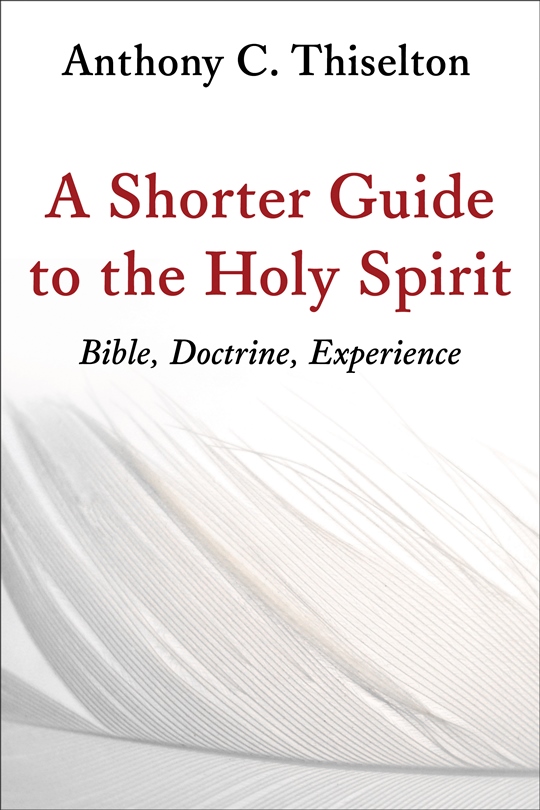Anthony Thiselton: A Shorter Guide to the Holy Spirit
 Anthony C. Thiselton, A Shorter Guide to the Holy Spirit: Bible, Doctrine, Experience (Grand Rapids: William B. Eerdmans Publishing Company, 2016).
Anthony C. Thiselton, A Shorter Guide to the Holy Spirit: Bible, Doctrine, Experience (Grand Rapids: William B. Eerdmans Publishing Company, 2016).
Anthony Thiselton’s Shorter Guide is a “shorter guide” in that it was written at the request of his publisher to provide a shorter treatment (228 pages) of his more substantial 2013 work, The Holy Spirit: In Biblical Teaching, through the Centuries, and Today. That volume runs 570 pages, so this work is just under half the length. Thiselton indicates that this work is not a mere abridgment, stating that he has “seldom consulted it [the earlier volume] while writing this present book.” He also notes that this volume is an opportunity to focus more on doctrine and less on history, as well as to look more fully at “…the explosion of Pentecostalism in the two-thirds world as a global phenomenon.” Having not read the earlier volume, this reviewer is unable to comment on this.
The book is divided into three main parts. Part one focuses on the biblical writings and contains seven chapters that survey the biblical material. One chapter is devoted to the Old Testament and another is dedicated to the literature of intertestamental Judaism. The remaining five chapters cover the New Testament.
The second section looks at doctrinal themes. These include the Trinity, Jesus Christ, the Church, revelation and inspiration, sanctification and eschatology. The treatments in this section may focus “less on history” (as Thiselton states), but this claim would be true only in the depth to which the historical development of these doctrines is covered. There is no skimping on the comprehensive nature of the historical personalities covered.
The final section deals with the experience of the Holy Spirit and Pentecostalism’s development and current influence. Thiselton covers the development of Pentecostalism in the United States, Latin America, Asia and Africa. He then moves to review the current situation, stating, “Pentecostalism has undoubtedly reached a new stage its development. The movement now boasts … world-class theologians….” (p. 154)
Following an overview of the work being done by contemporary Pentecostal theologians and biblical scholars, one chapter focuses on the topic of hermeneutics (a topic on which Thiselton has written prolifically) and another dealing with the church’s worship and prayer life. There is a critical assessment here with no attempt to veer away from a critical analysis of weakness that needs addressing.
The volume includes full indexes of authors, subjects, Scripture and other ancient sources referenced, as well a lengthy bibliography.
Thiselton’s writing is clear, concise and cogent. The chapters themselves are outlined making it very clear when one section is ending and another beginning. Numerous footnotes document the sources as Thiselton engages with scholars, both ancient and modern.
The use of the word “guide” in the title is appropriate for this work. In addition to the outline format mentioned above, the territory covered is vast and many topics that could be book-length treatments are dealt with in a few paragraphs. As an example, in one paragraph in the chapter titled “The Holy Spirit and Hermeneutics,” Thiselton manages to mention each of the following: Heidegger, Bultmann, Gadamer, Ricoeur, feminist writers and liberation theologians.
Category: Spirit, Winter 2017


